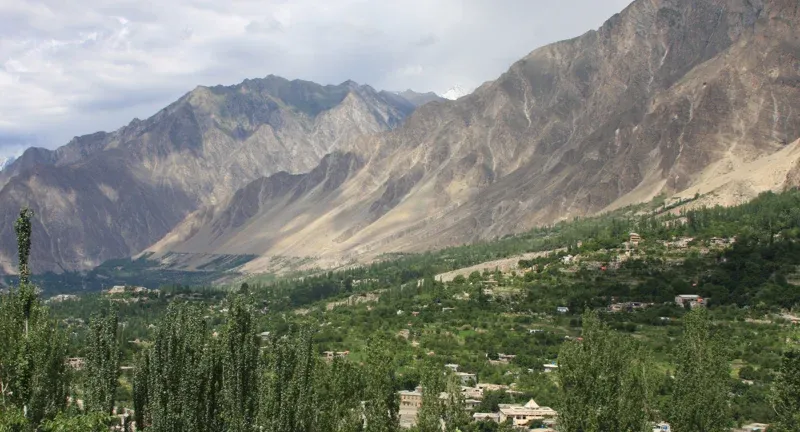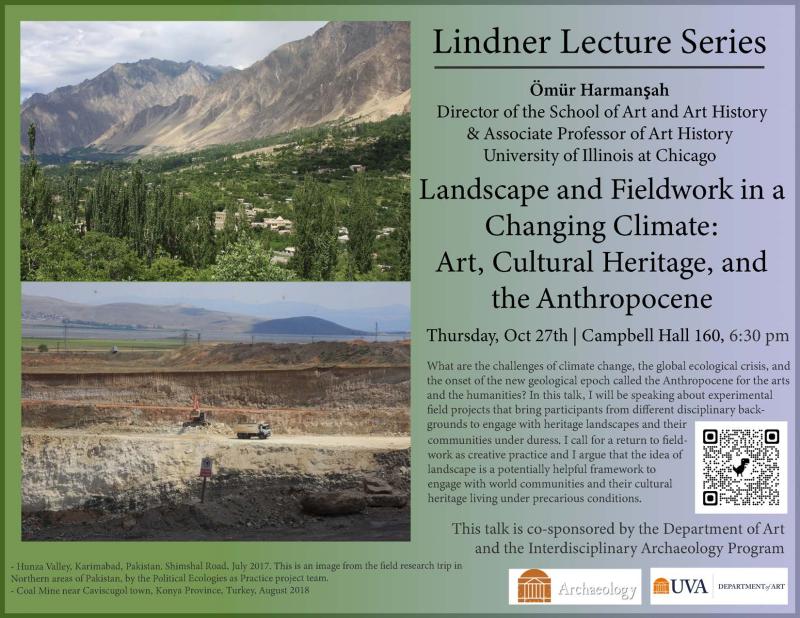Landscape and Fieldwork in a Changing Climate: Art, Cultural Heritage, and the Anthropocene
Lindner Lecture in Art History

Thursday, October 27, 2022 | 6.30pm in 160 Campbell Hall | Reception in the Fayerweather Lounge to Follow
The second Lindner Lecture in Art History will be with Ömür Harmanşah, Director of the School of Art and Art History & Associate Professor of Art History, University of Illinois at Chicago.
This talk is co-sponsored by the Department of Art and the Interdisciplinary Archaeology Program. The full list of past and upcoming Lindner talks is now available on our Departmental website.
Abstract
Ecological crises and global climate change have become matters of everyday concern all around the world. From “breaking news” reports on hurricanes to mass migrations caused by war, terrorism, and violence; from scientific reports on the extinction of biological species to apocalyptic feature films, we live in an era of ecological anxiety and precarity. What does it mean to practice fieldwork in such a tense present and what kinds of unexpected collaborations and new sensitivities are required to study landscapes and their communities in the Anthropocene? How do arts and humanities contribute to debates on climate change? My current book project investigates the politics, ethics, and methodologies of performing archaeological fieldwork in the Middle East at a moment of global ecological crisis, military conflict, and heritage violence. The debate around the new geological epoch of the Anthropocene has proven to be not simply a geological debate but a political and cultural one, urging historians and archaeologists to revise their methodologies in writing the cultural and political history of the planet. My work draws heavily on the literature in the emerging fields of environmental humanities, political ecology, decoloniality, and posthumanism towards rethinking fieldwork and the landscapes of cultural heritage. Furthermore, I am drawing on recent cross-disciplinary, multi-sited, and experimental fieldwork in Turkey, Pakistan, and elsewhere in Western Asia which brought archaeologists, artists, anthropologists, and others in the arts, the humanities, and the sciences together to reflect on local implications of climate change. In this paper, I offer a call for fieldwork as creative practice and the idea of landscape as a potentially helpful framework to engage with world communities living under precarious conditions.
Ömür Harmanşah is currently Director of the School of Art & Art History and Associate Professor in the Department of Art History at UIC. He received his PhD in the History of Art from the University of Pennsylvania (2005). His current research focuses on the history of landscapes in the Middle East and the politics of ecology, place, and heritage in the age of the Anthropocene. As an archaeologist and an architectural historian of ancient Western Asia (a.k.a. the Near East), Harmansah specializes in the art, architecture, and material culture of Anatolia, Syria, and Mesopotamia during the Bronze and Iron Ages. He is the author of two monographs, titled Cities and the Shaping of Memory in the Ancient Near East (Cambridge UP, 2013), and Place, Memory, and Healing: An Archaeology of Anatolian Rock Monuments (Routledge, 2015). Harmansah directs Yalburt Yaylası Archaeological Landscape Research Project (2010-2022), and served as the Principal Investigator for the environmental humanities project entitled “Political Ecology as Practice: A Regional Approach to the Anthropocene,” supported by the Humanities Without Walls (2017-2019). He is working on a monograph titled Landscapes of the Anthropocene: Archaeology, Fieldwork, and the Politics of Heritage in the Middle East (under contract with Routledge). He is a co-author of the recently published art history survey volume The History of Art: A Global View (Thames & Hudson, 2021).
Lindner Lecture: Landscape and Fieldwork in a Changing Climate: Art, Cultural Heritage, and the Anthropocene
Art History
The UVA undergraduate program in art history equips students to think critically; to write well; and to find, analyze, evaluate, and present facts and ideas.
